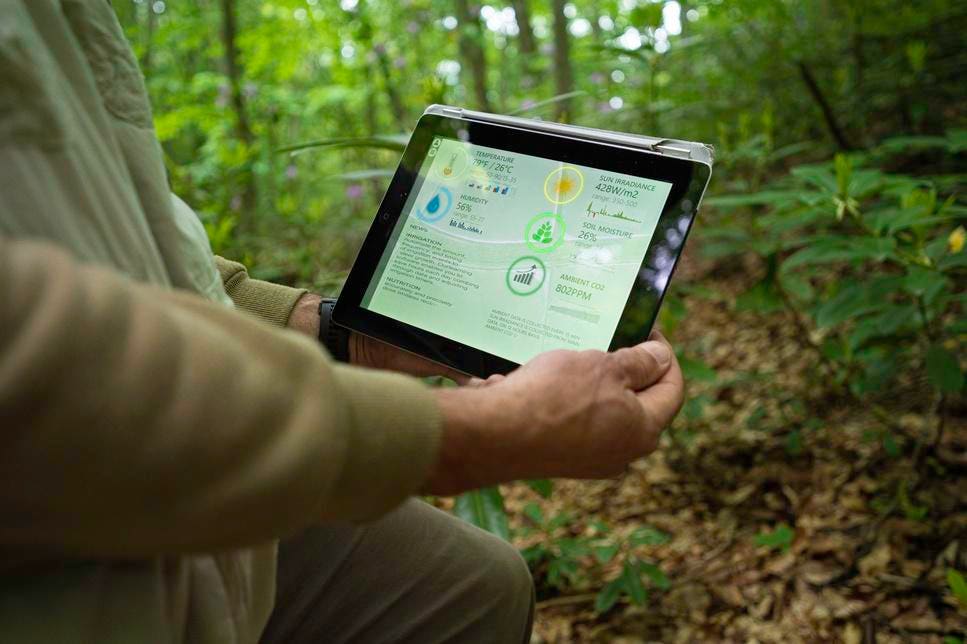
The challenge facing business isn't a lack of data. It's our fundamental miscalculation of what nature is.
gettyThere’s a persistent narrative in corporate sustainability circles that we’re just one more dataset away from solving our nature crisis.
The storyline goes something like this: if only we had better measurements, more comprehensive biodiversity assessments, and more granular ecosystem data, businesses could finally address their nature-related impacts and dependencies. This belief has spawned countless initiatives aimed at closing these nature “data gaps.”
The nature challenge facing business isn’t a lack of data. It’s our fundamental miscalculation of what nature is and how it works. When we talk about “filling nature data gaps,” we’re operating under a Planet Simple mindset: the misguided belief that nature is something external to business that can be fully measured, quantified, and ultimately controlled.
A Relationship of Illusion
Consider that scientists still cannot agree on how many species exist on Earth. Current estimates range from 2 million to over 1 trillion species, with a “best guess” somewhere between 8 and 20 million. If the scientific community—armed with sophisticated tools and centuries of taxonomic research—cannot reach a consensus on this seemingly straightforward question, is it realistic to believe corporations can accurately assess their full impact on nature?
This pervasive uncertainty is built on the fact that nature is not a static entity waiting to be cataloged; it’s a complex, dynamic web of relationships that defies our attempts at complete understanding. Whenever we think we’ve mapped out an ecosystem, we discover new species, interactions, and complexities that challenge our previous assumptions.
Yet corporate sustainability initiatives often proceed as if nature were a puzzle missing just a few pieces. We create sophisticated reporting frameworks, develop “comprehensive” nature assessment tools, and build elaborate databases—all operating under the illusion that with enough data points, we can fully grasp and manage our relationship with the natural world.
We do all this – and yet the multitude of metrics has often led to confusion and inaction rather than meaningful change
The Actual Nature Data Gap
Instead of looking outward, we need to look inward.
Businesses need to shift their focus from attempting to quantify nature through complex metrics to understanding how their current business models are fundamentally intertwined with natural systems. Are we acknowledging how our business depends on natural resources, and how our activities impact natural systems? Or are we too busy waiting for more data about the “state of nature”?
When we look inward, we focus on unpacking the reality that has been hiding in plain sight. Leading guidance helps businesses make the conceptual shift by defining impact drivers that businesses can focus on. Some of these impact drivers are:
- Land use change – such as converting forests to agriculture or clearing land for property development
- Resource use – including water use, minerals, and direct use of natural resources such as forestry
- Pollution – air, water, and soil pollution that affects natural habitat
Most businesses know whether they’re clearing land, increasing resource use, or releasing pollutants. But few have connected these activities to “nature.”
When businesses look inward and use impact drivers to define the business-nature connection, they can immediately identify a few ways to manage nature impacts by addressing what they’re already doing. This is far more straightforward than hoping “nature data” will provide the answer.
Nature Isn’t Just ‘Out There’
The next frontier in corporate sustainability isn’t more nature data—it’s nature intelligence. This means developing the capacity to think systemically, act with humility, and make decisions that acknowledge both the known and unknown dimensions of our relationship with the natural world. Only then can we move beyond the Planet Simple mindset and toward truly sustainable business practices that honor the complexity and mystery of the natural systems upon which we depend.
Business has always been part of nature and depends heavily on its resources. We don’t need more data about nature “out there”—we can now start understanding our connections to nature. With this intelligence, business has what it needs to thrive as our planet evolves.









